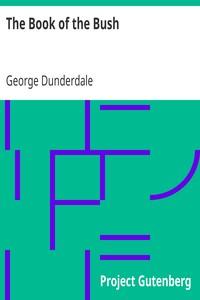|
|
Read this ebook for free! No credit card needed, absolutely nothing to pay.Words: 13020 in 4 pages
This is an ebook sharing website. You can read the uploaded ebooks for free here. No credit cards needed, nothing to pay. If you want to own a digital copy of the ebook, or want to read offline with your favorite ebook-reader, then you can choose to buy and download the ebook.

: Scientific American Supplement No. 620 November 191887 by Various - Science Periodicals Scientific American@FreeBooksTue 06 Jun, 2023 A GIGANTIC LOAD OF LUMBER. THE NEWBERY-VAUTIN CHLORINATION PROCESS. Mr. Claude Vautin, a gentleman possessed of much practical experience of gold mining and extraction in Queensland, together with Mr. J. Cosmo Newbery, analytical chemist to the government of Victoria, have developed a process which they claim to combine all the advantages of the foregoing methods, and by the addition of certain improvements in the machinery and mode of treatment to overcome the difficulties which have hitherto prevented the general adoption of the chlorination process. We have specified above the objections to the old processes of chlorination, so it may be fairly asked in what way the Newbery-Vautin process avoids the various chemical actions which have hitherto proved so difficult to contend with. For any system of chlorination yet introduced it is necessary to free the ore from sulphides. This is done by roasting according to any of the well-known systems in vogue. It is a matter which requires great care and considerable skill. The heat must be applied and increased slowly and steadily. If, through any neglect on the part of the roaster, the ore is allowed to fuse, in most cases it is best to throw the charge away, as waste. This roasting applies equally to the Vautin process as to any others. So on this head there is no alteration. One of the most important advantages is not a chemical one, but is the rapidity with which the charge can be treated. In the older styles of treatment the time varied from thirty six to ninety hours. Now this is accomplished in from three to six hours with a practically perfect result. The older processes required a careful damping of the ore, which, to get good results, must leave the ore neither too wet nor too dry. Now "damping" is entirely done away with, and in its place water is poured into the barrel. Pressure to the extent of four atmospheres causes chlorine gas to leave its vaporous form. Thus the pressure applied not only enables a strong solution of chlorine to be formed with the water in the barrel, but forces this into contact with the gold through every crevice in the ore. Chlorine gas also takes up any silver which may exist in association with the gold. In the older processes this is deposited as a film of chloride of silver around the fine gold grains, and from its insolubility in water prevents the absorption of the gold. The rotary motion of the barrel in the Newbery-Vautin method counteracts this by continually rubbing the particles together; this frees the particles from any accumulations, so that they always present fresh surfaces for the action of the solvent. Again, the short time the ore is in contact with the chlorine does not allow of the formation of hydrochloric acid, which has a tendency to precipitate the gold from its soluble form in the water before being withdrawn from the chlorinator. The advantage of using charcoal as a decomposing agent for chloride of gold was pointed out by Mr. Newbery some twenty years ago; four or five years since the idea was patented in the United States, but as this was given gratis to the world years before, the patent did not hold good. The form of precipitation generally adopted was to add sulphate of iron to the liquid drawn from the filter. This not only threw down the gold it contained, but also the lime and magnesia. Then very great care was necessary, and a tedious process had to be gone through to divide the gold from these. Now, by filtration through charcoal everything that is soluble in hydrochloric acid passes away with the water; for instance, lime and magnesia, which before gave such great trouble. In passing through the charcoal, the chloride of gold is decomposed and all fine gold particles are taken up by the charcoal, so that it is coated by what appears to be a purple film. Should copper be associated with the gold, the water, after running through the charcoal filter, is passed over scrap iron, upon which the copper is precipitated by a natural chemical action. If silver is contained in the ore, it is found among the tailings in the filter, in a chloride which is insoluble in water. Should the quantity prove sufficiently large, it may be leached out in the usual way by hyposulphites. One of the great advantages common to all systems of chlorination is that ores may be crushed dry and treated, so that the loss from float gold may be avoided. Of this loss, which is most serious, we shall have something to say on another occasion. An advantage in amalgamation with chlorine gas instead of amalgamation with quicksilver in the wet way, is that the ore need not be crushed so finely. Roasting takes the place of fine crushing, as the ore from the roasting furnace is either found somewhat spongy in texture or the grains of silica in which fine gold may be incased are split or flawed by the fire. For quicksilver amalgamation very fine crushing is necessary to bring all gold particles in contact with it. Quicksilver being so thick in substance, it will not find its way readily in and out of a microscopically fine spongy body or through very fine flaws in grains of silica, whereas chlorine gas or a solution of liquefied chlorine does this, and absorbs the gold far more readily. There are cases when gold is contained in ores in what is known as a perfectly "free" form--that is, there is an absence of all sulphides, arsenides, etc.--when it is not practicable to extract it either with the ordinary forms of quicksilver amalgamation of or any process of chlorination, without first roasting. This is because the finer gold is locked up inside fine grains of silica and hydrated oxide of iron. No ordinary crushing will bring this fine enough, but when roasting is resorted to by drawing it rapidly through a furnace heated to a cherry red, these grains are split up so that chlorine gas is enabled to penetrate to the gold. It may be said that an equally clever chemist will be required to work this improved process as compared with those that have, one by one, fallen into disuse, mainly from want of knowledge among the operators. To a certain extent this is so. The natural chemical actions are not so delicate, but an ignorant operator would spoil this process, as he does nearly every other. When a reef is discovered, practice shows that its strongest characteristics are consistently carried throughout it wherever it bears gold. Before Messrs. Newbery and Vautin leave a purchaser to deal himself with their process, they get large samples of his ore to their works and there experiment continually until a practically perfect result is obtained; then any one with a moderate amount of knowledge can work with the formula supplied. It has been their experience that the ore from any two mines rarely presents the same characteristics. Experiments are begun by treating very coarse crushings. These, if not satisfactory, are gradually reduced until the desired result is obtained. APPARATUS FOR EXERCISING THE MUSCLES. The apparatus herewith illustrated consists of a wooden base, which may be bolted to the floor, and which supports two wooden uprights, to which is affixed the apparatus designed to exercise the legs. The apparatus for exercising the arms is mounted upon a second frame that slides up and down the wooden supports. It is fixed in position at any height by means of two screws. Free books android app tbrJar TBR JAR Read Free books online gutenberg More posts by @FreeBooks
: Curiosities of Literature Vol. 2 by Disraeli Isaac Disraeli Benjamin Earl Of Beaconsfield Editor - English literature History and criticism; Literature Anecdotes; Litterateurs Bibliomania@FreeBooksTue 06 Jun, 2023

: The Book of the Bush Containing Many Truthful Sketches of the Early Colonial Life of Squatters Whalers Convicts Diggers and Others Who Left Their Native Land and Never Returned by Dunderdale George Macfarlane J Illustrator - Australia Description and trav@FreeBooksTue 06 Jun, 2023

: Combed Out by Voigt F A Frederick Augustus - World War 1914-1918 Personal narratives English World War I@FreeBooksTue 06 Jun, 2023
|
Terms of Use Stock Market News! © gutenberg.org.in2025 All Rights reserved.






